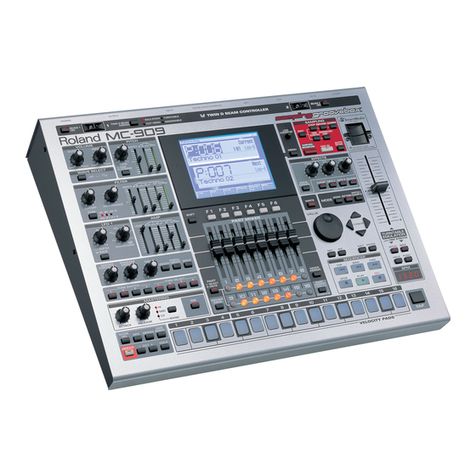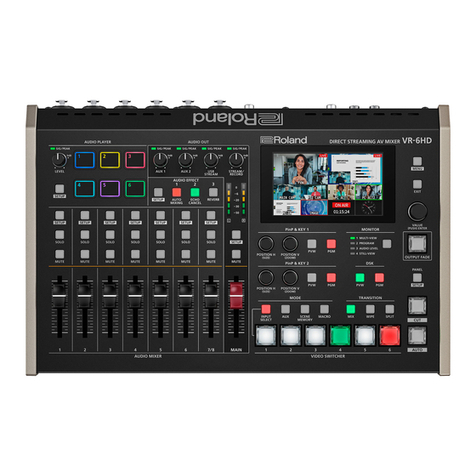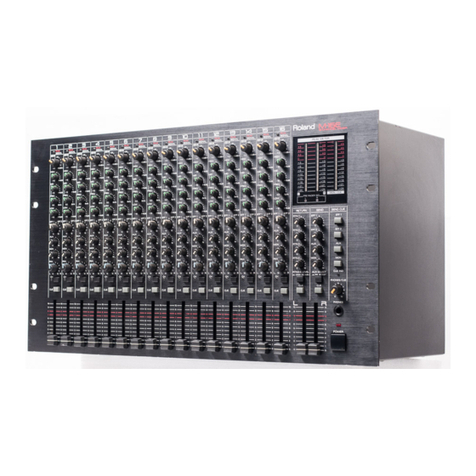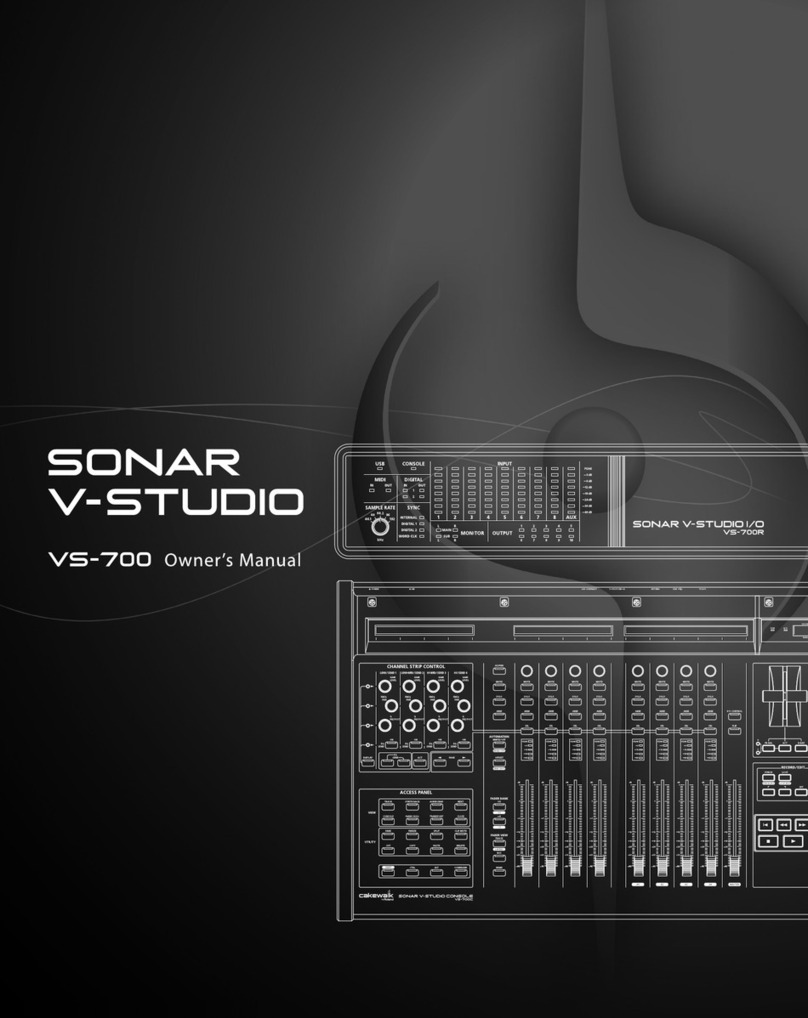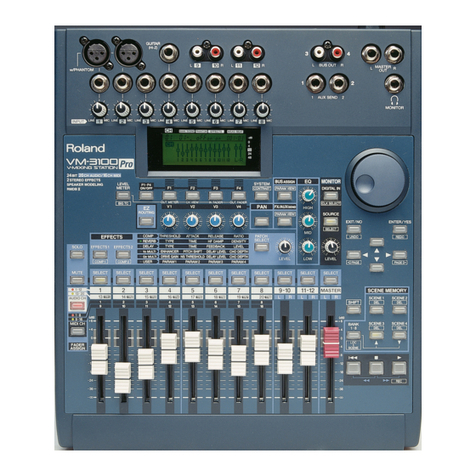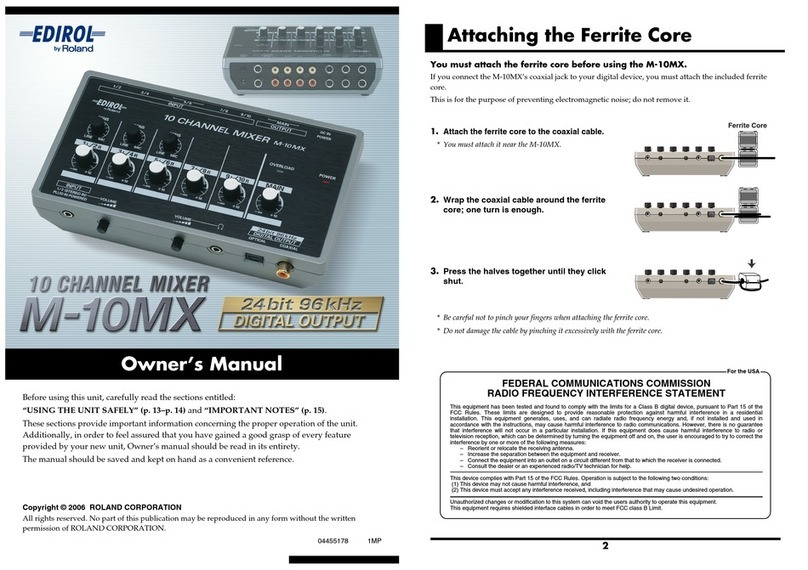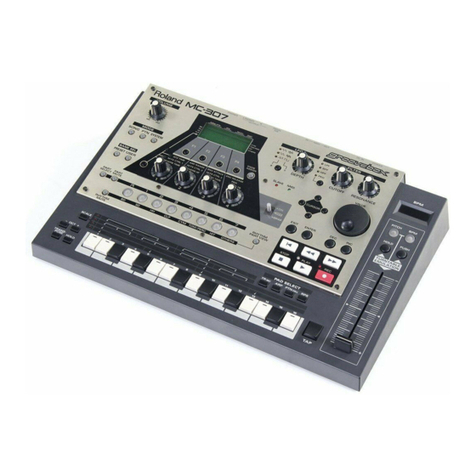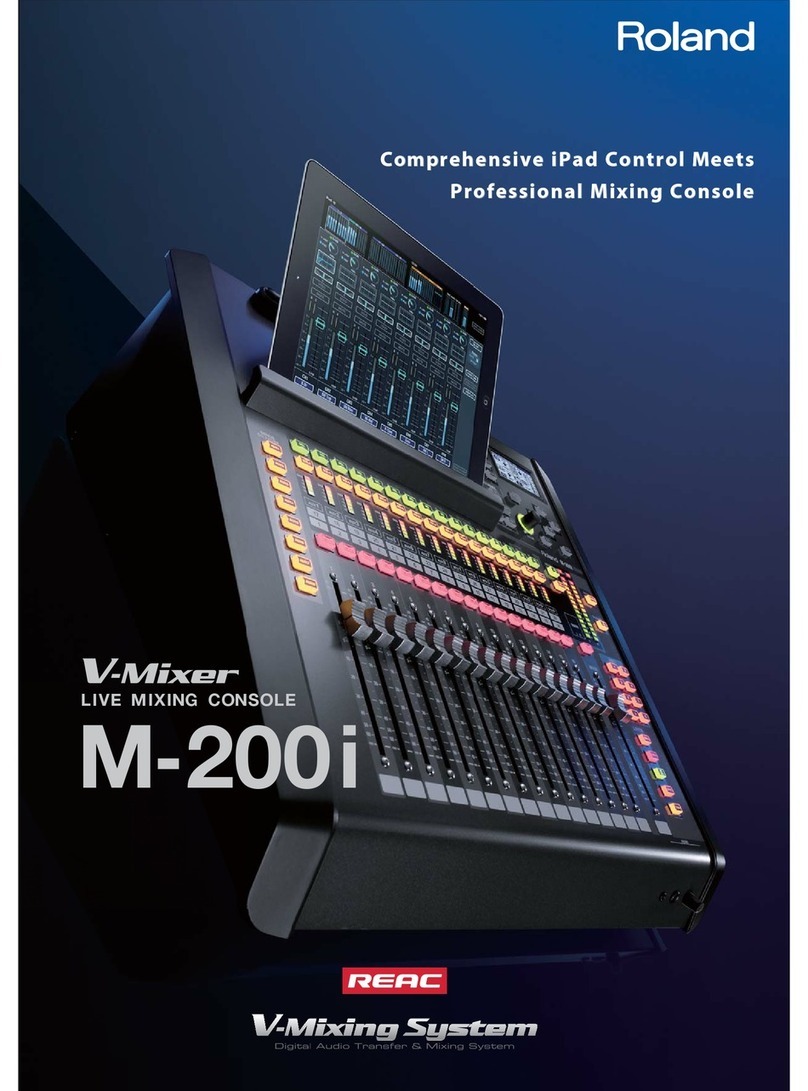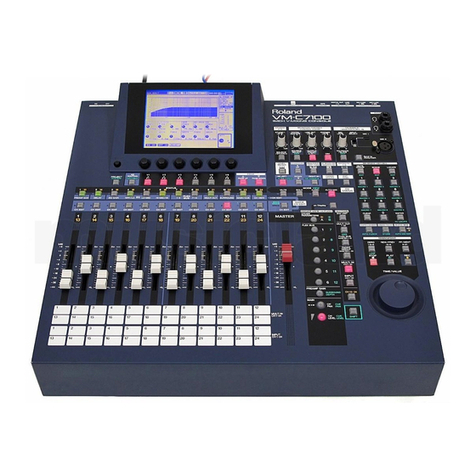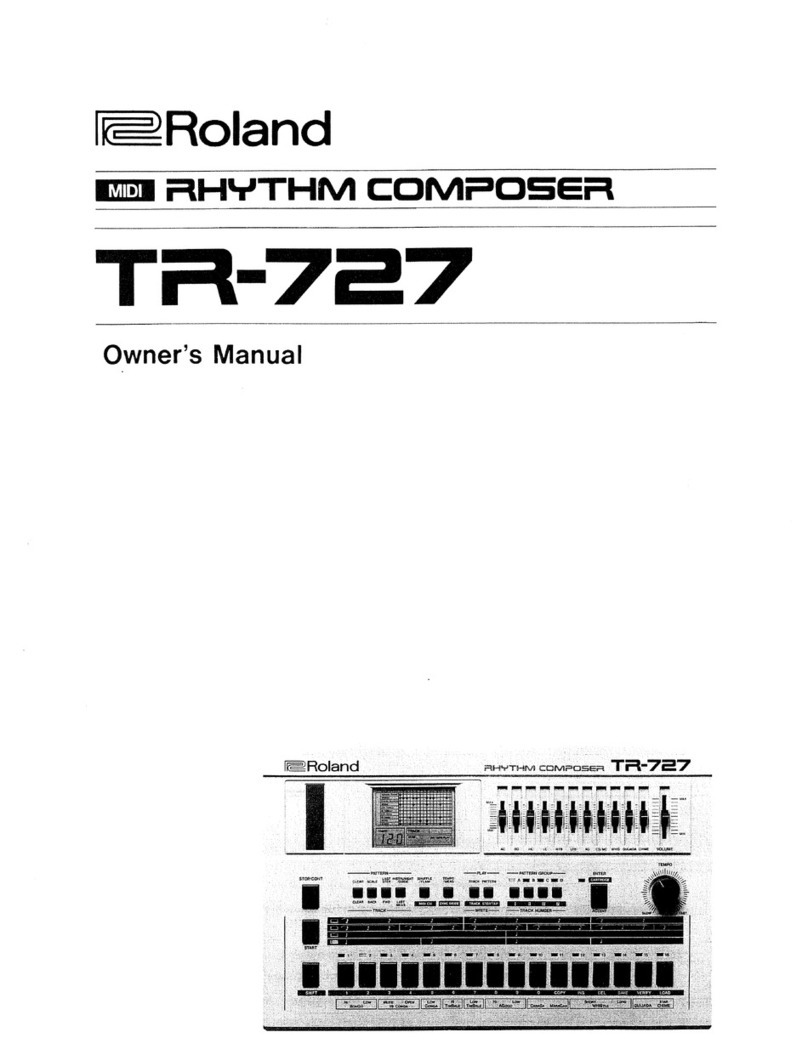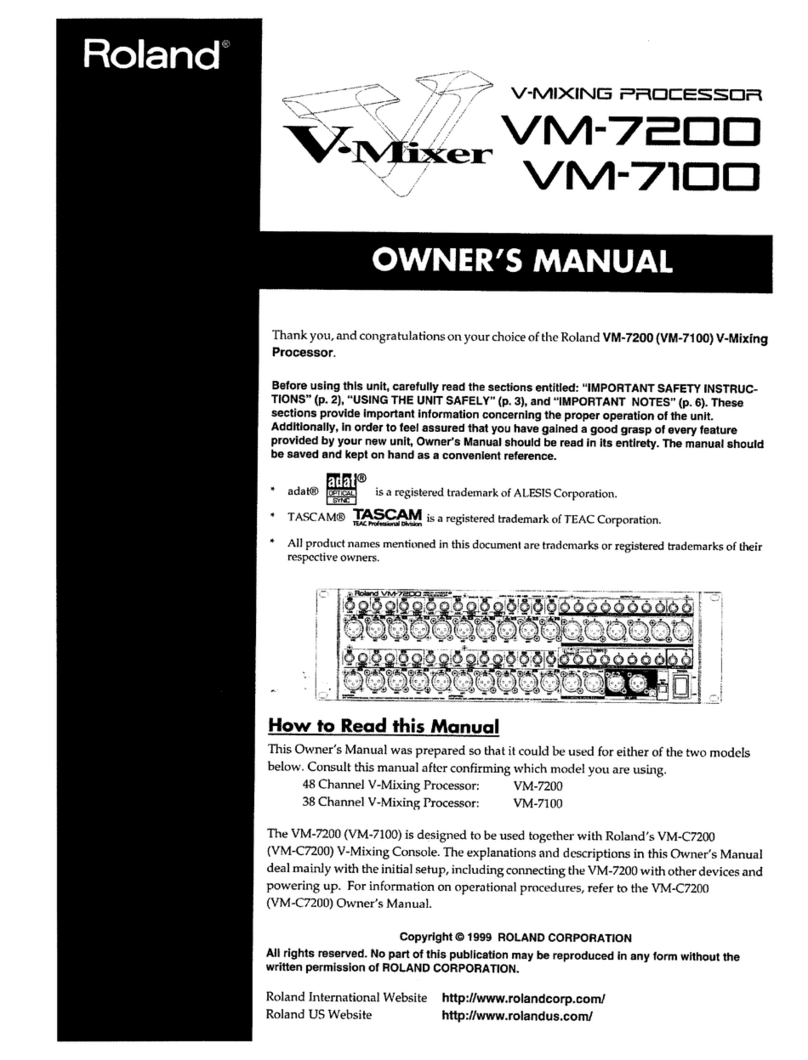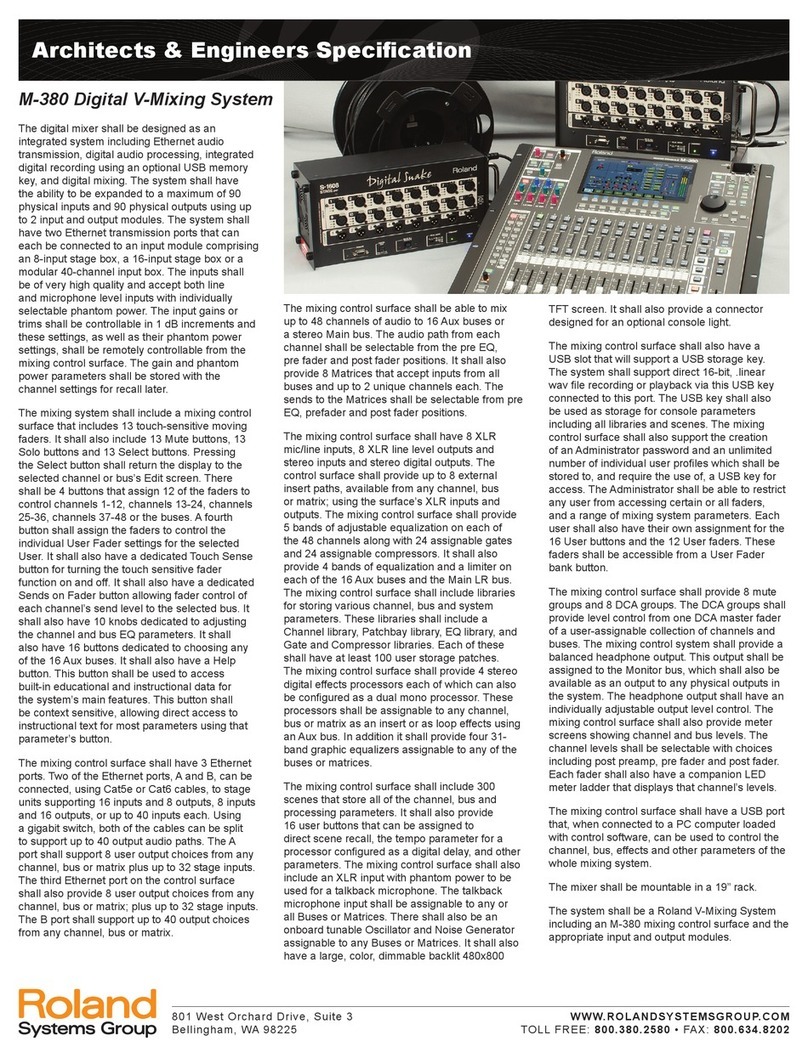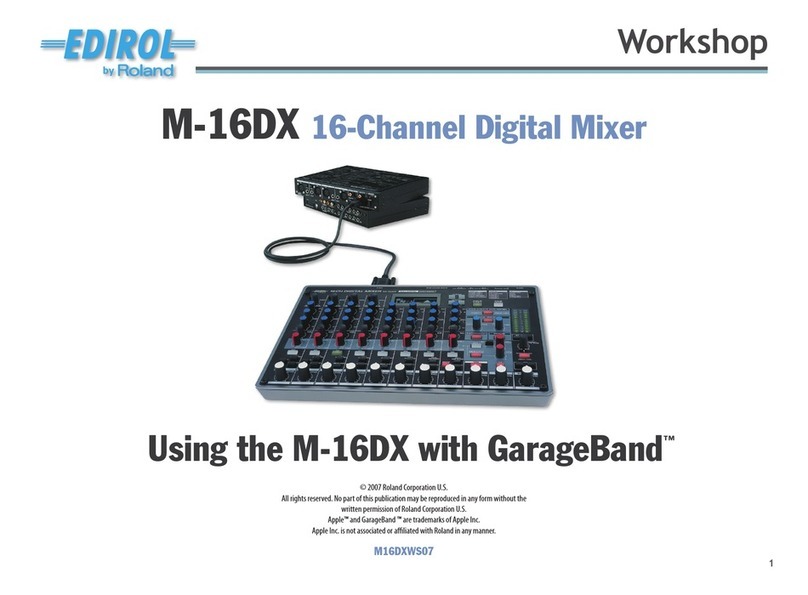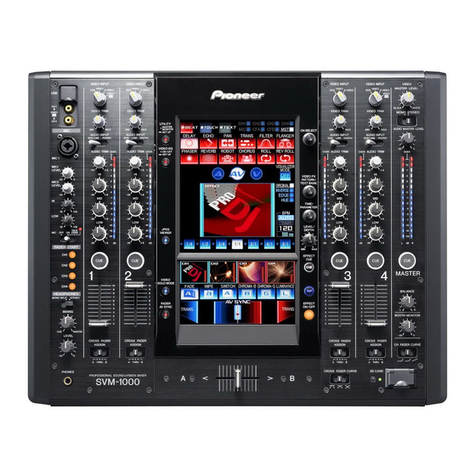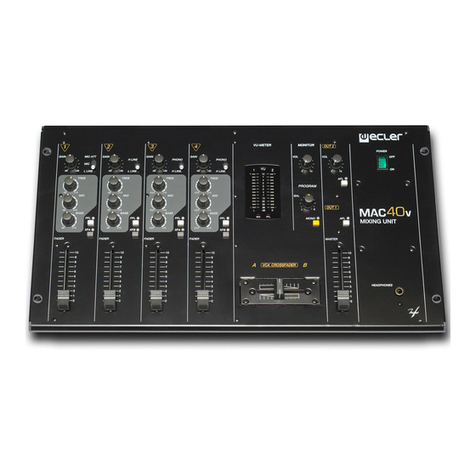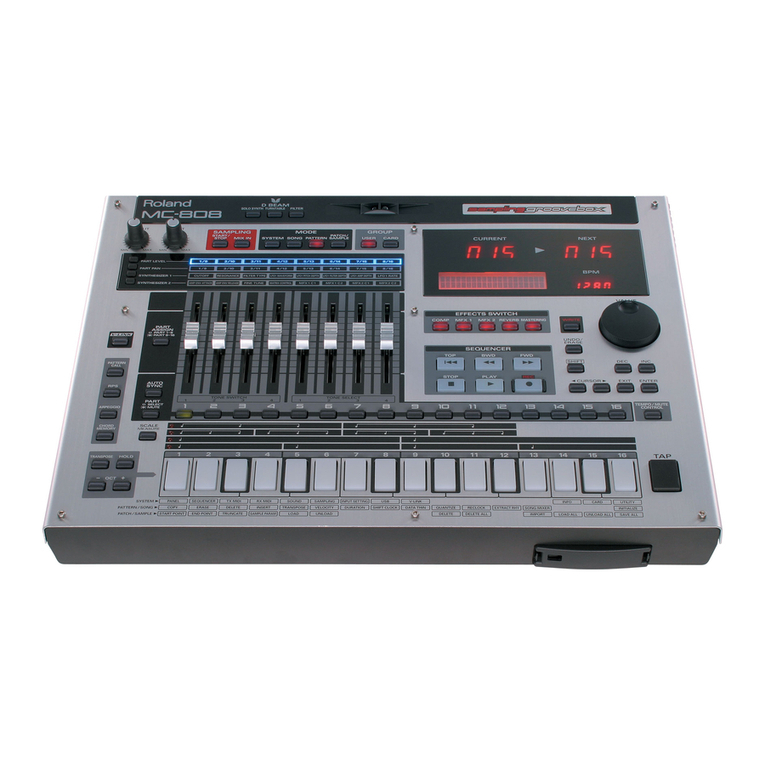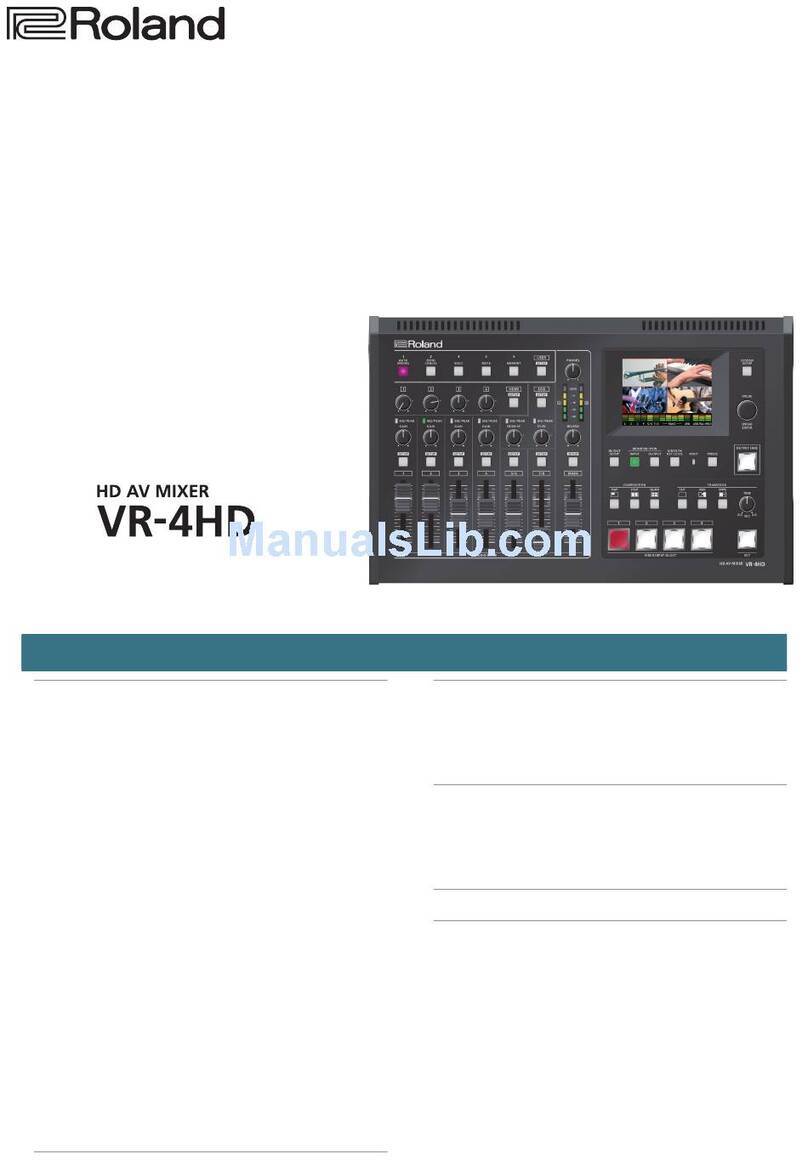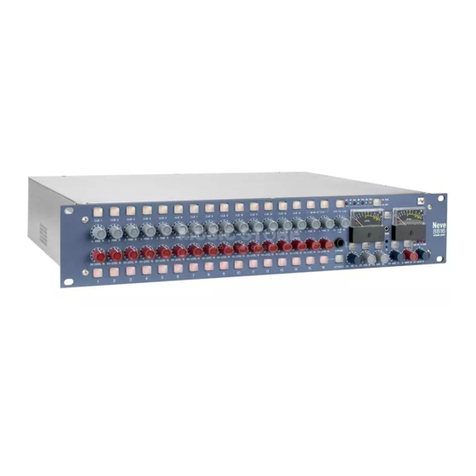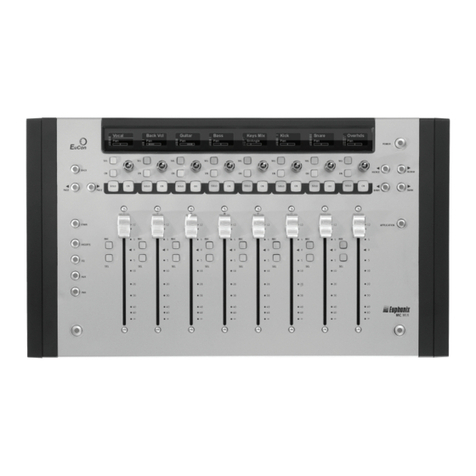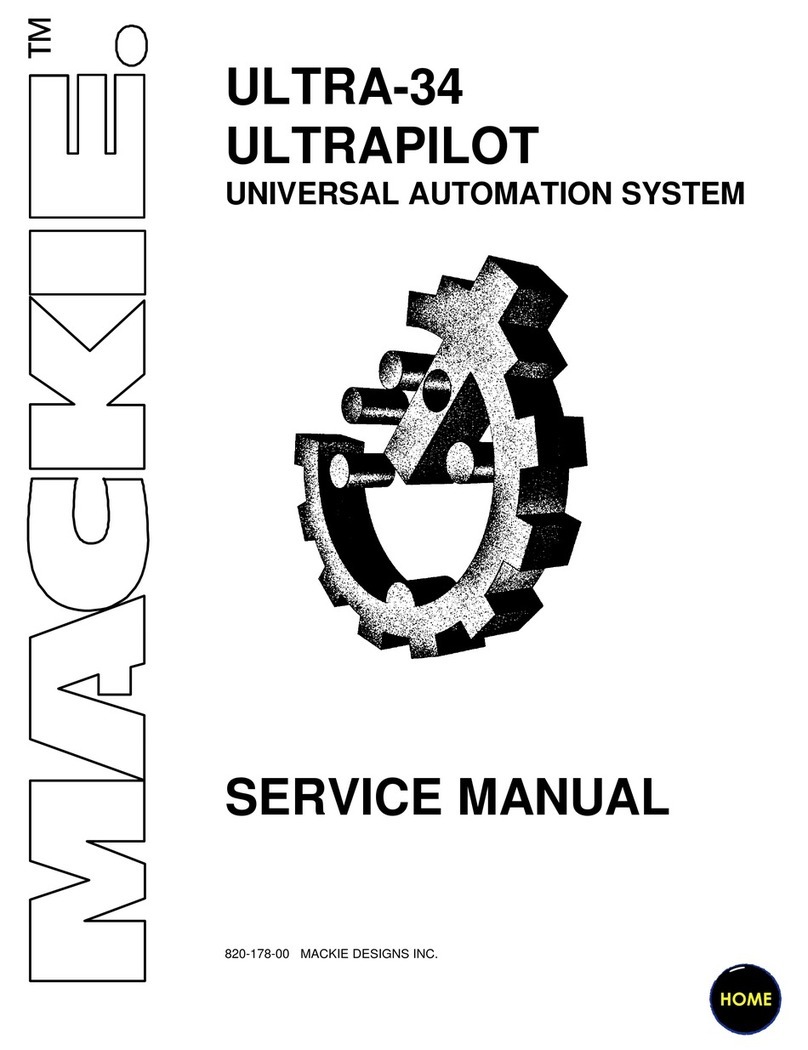801 West Orchard Drive, Suite 3
Bellingham, WA 98225
WWW.ROLANDSYSTEMSGROUP.COM
TOLL FREE: 800.380.2580 • FAX: 800.634.8202
Architects & Engineers Speci cation
The digital mixer shall be designed as an
integrated system including Ethernet audio
transmission, digital audio processing, integrated
digital recording using an optional USB memory
key, and digital mixing. The system shall have
the ability to be expanded to a maximum of 90
physical inputs and 90 physical outputs using up
to 2 input and output modules. The system shall
have two Ethernet transmission ports that can
each be connected to an input module comprising
an 8-input stage box, a 16-input stage box or a
modular 40-channel input box. The inputs shall
be of very high quality and accept both line
and microphone level inputs with individually
selectable phantom power. The input gains or
trims shall be controllable in 1 dB increments and
these settings, as well as their phantom power
settings, shall be remotely controllable from the
mixing control surface. The gain and phantom
power parameters shall be stored with the
channel settings for recall later.
The mixing system shall include a mixing control
surface that includes 25 touch-sensitive moving
faders. It shall also include 25 Mute buttons, 25
Solo buttons and 25 Select buttons. Pressing
the Select button shall return the display to the
selected channel or bus’s Edit screen. There
shall be 3 buttons that assign 24 of the faders
to control channels 1-24, channels 25-48, or
the buses. A fourth button shall assign the
faders to control the individual User Fader
settings for the selected User. It shall also have
a dedicated Touch Sense button for turning the
touch sensitive fader function on and off. It shall
also have a dedicated Sends on Fader button
allowing fader control of each channel’s send
level to the selected bus. It shall also have 10
knobs dedicated to adjusting the channel and
bus EQ parameters. It shall also have 16 buttons
dedicated to choosing any of the 16 Aux buses.
It shall also have two dedicated Threshold knobs
for adjusting the threshold parameter for the
Gates, Compressors and Limiters. It shall also
have a Help button. This button shall be used to
access built-in educational and instructional data
for the system’s main features. This button shall
be context sensitive, allowing direct access to
instructional text for most parameters using that
parameter’s button.
The mixing control surface shall have 3 Ethernet
ports. Two of the Ethernet ports, A and B, can be
connected, using Cat5e or Cat6 cables, to stage
units supporting 16 inputs and 8 outputs, 8 inputs
and 16 outputs, or up to 40 inputs each. Using
a gigabit switch, both of the cables can be split
to support up to 40 output audio paths. The A
port shall support 8 user output choices from any
channel, bus or matrix plus up to 32 stage inputs.
The third Ethernet port on the control surface
shall also provide 8 user output choices from any
channel, bus or matrix; plus up to 32 stage inputs.
The B port shall support up to 40 output choices
from any channel, bus or matrix.
The mixing control surface shall be able to mix
up to 48 channels of audio to 16 Aux buses or
a stereo Main bus. The audio path from each
channel shall be selectable from the pre EQ,
pre fader and post fader positions. It shall also
provide 8 Matrices that accept inputs from all
buses and up to 2 unique channels each. The
sends to the Matrices shall be selectable from pre
EQ, prefader and post fader positions.
The mixing control surface shall have 8 XLR
mic/line inputs, 8 XLR line level outputs and
stereo inputs and stereo digital outputs. The
control surface shall provide up to 8 external
insert paths, available from any channel, bus
or matrix; using the surface’s XLR inputs and
outputs. The mixing control surface shall provide
5 bands of adjustable equalization on each of
the 48 channels along with 24 assignable gates
and 24 assignable compressors. It shall also
provide 4 bands of equalization and a limiter on
each of the 16 Aux buses and the Main LR bus.
The mixing control surface shall include libraries
for storing various channel, bus and system
parameters. These libraries shall include a
Channel library, Patchbay library, EQ library, and
Gate and Compressor libraries. Each of these
shall have at least 100 user storage patches.
The mixing control surface shall provide 4 stereo
digital effects processors each of which can also
be con gured as a dual mono processor. These
processors shall be assignable to any channel,
bus or matrix as an insert or as loop effects using
an Aux bus. In addition it shall provide four 31-
band graphic equalizers assignable to any of the
buses or matrices.
The mixing control surface shall include 300
scenes that store all of the channel, bus and
processing parameters. It shall also provide
16 user buttons that can be assigned to
direct scene recall, the tempo parameter for a
processor con gured as a digital delay, and other
parameters. The mixing control surface shall also
include an XLR input with phantom power to be
used for a talkback microphone. The talkback
microphone input shall be assignable to any or
all Buses or Matrices. There shall also be an
onboard tunable Oscillator and Noise Generator
assignable to any Buses or Matrices. It shall also
have a large, color, dimmable backlit 480x800
TFT screen. It shall also provide a connector
designed for an optional console light.
The mixing control surface shall also have a
USB slot that will support a USB storage key.
The system shall support direct 16-bit, .linear
wav le recording or playback via this USB key
connected to this port. The USB key shall also
be used as storage for console parameters
including all libraries and scenes. The mixing
control surface shall also support the creation
of an Administrator password and an unlimited
number of individual user pro les which shall be
stored to, and require the use of, a USB key for
access. The Administrator shall be able to restrict
any user from accessing certain or all faders,
and a range of mixing system parameters. Each
user shall also have their own assignment for the
16 User buttons and the 24 User faders. These
faders shall be accessible from a User Fader
bank button.
The mixing control surface shall provide 8 mute
groups and 8 DCA groups. The DCA groups shall
provide level control from one DCA master fader
of a user-assignable collection of channels and
buses. The mixing control system shall provide a
balanced headphone output. This output shall be
assigned to the Monitor bus, which shall also be
available as an output to any physical outputs in
the system. The headphone output shall have an
individually adjustable output level control. The
mixing control surface shall also provide meter
screens showing channel and bus levels. The
channel levels shall be selectable with choices
including post preamp, pre fader and post fader.
Each fader shall also have a companion LED
meter ladder that displays that channel’s levels.
The mixing control surface shall have a USB port
that, when connected to a PC computer loaded
with control software, can be used to control the
channel, bus, effects and other parameters of the
whole mixing system.
The system shall be a Roland V-Mixing System
including an M-400 mixing control surface and the
appropriate input and output modules.
M-400 Digital V-Mixing System
